LIGHTING DESIGNER Minna Tiikkainen
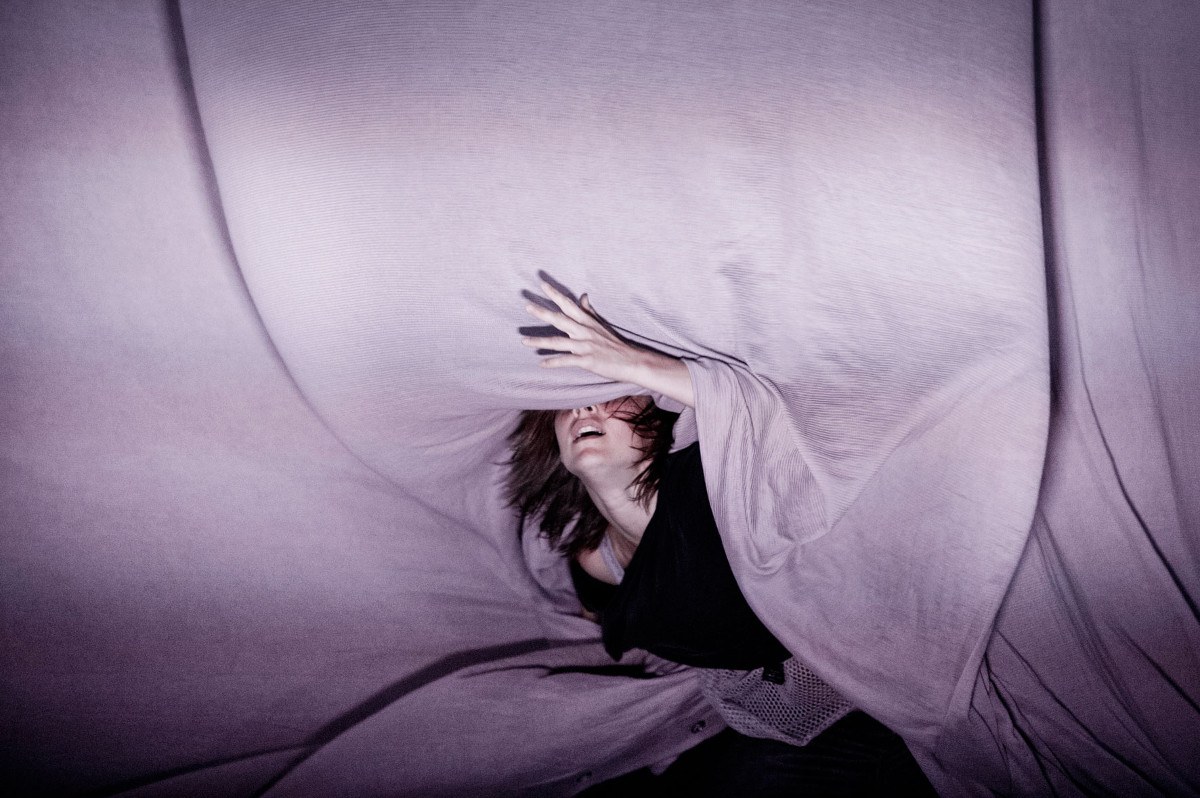

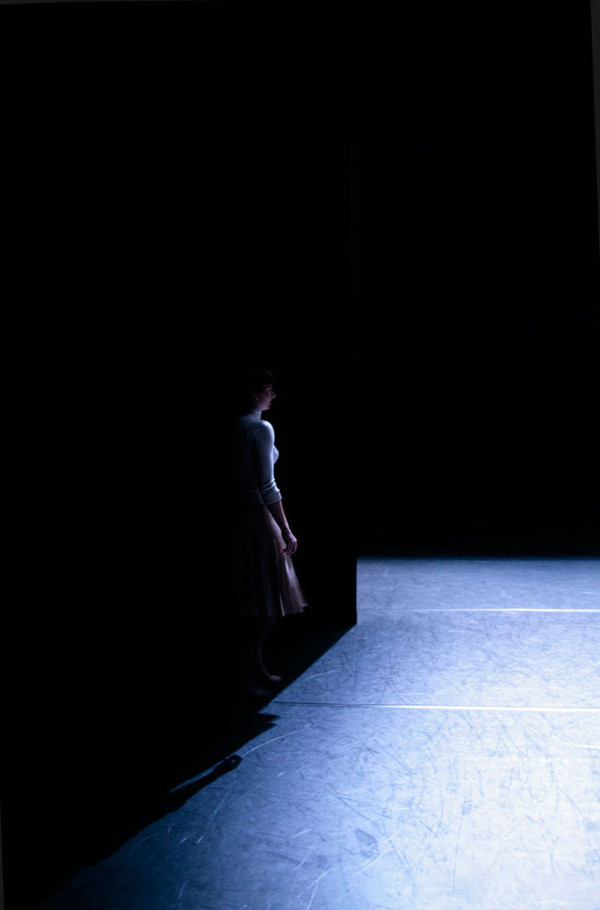
Lighting Designer Minna Tiikkainen (born 1969, Helsinki, FI) started her experiments with light while studying fine arts. Her fascination with the immaterial quality of it led her to enroll in the Theater Academy of Finland, from where she graduated with an MA in Lighting Design. Since moving to Amsterdam early 2000, she has been working mostly within the field of performing arts and contemporary dance both in The Netherlands and abroad. She has also created several set designs as well as lighting designs for exhibitions. Her work is described as strong in its simple minimal approach and is especially appreciated for its significance for the totality of the performance. She received “SÄDE AWARD for best lighting design in 2012” from the Finnish Association of Lighting Designers for her work in performance GRIND.
Her recent work features in production of choreographers including Jefta van Dinther, Mette Ingvartsen, Nicole Beutler, Keren Levi and Kate McIntosh.
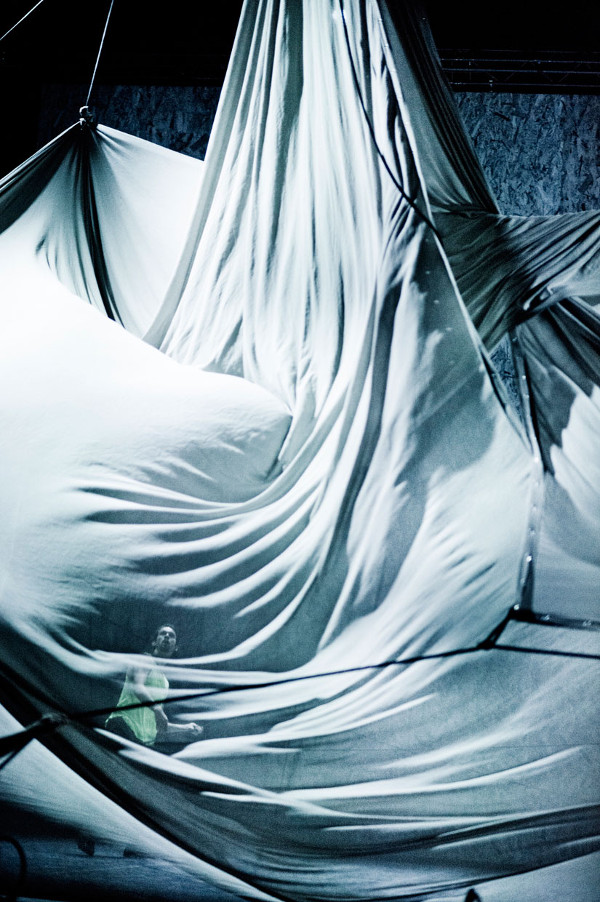
Choreographer Jefta van Dinther created Plateau Effect for large venues featuring nine of the Cullberg Ballet dancers. The lighting design is based on idea of movement and the suttle changes of directions and extremely rapid changes in colour are creating a constantly shifting space, where the different qualities of decor and choreograhic element — a huge fabric — is highlighted. Towards the end of the performance the focus shifts from the material to the dancers and the performance enters a world of dramatically lit ritual. The lighting is realised entirely with LED light sources.
Plateau Effect was listed by the New York Times as one of the most interesting performances of 2013.
The Swedish choreographer Jefta van Dinther conceived “Plateau Effect,” a large-venue piece, for nine dancers from the prestigious Swedish company Cullberg Ballet, which is bringing the work to the Autumn Festival near Paris. Dancers become like a nomadic community, moving in an unsettled progression through various terrain. The acts of building, transporting, communicating and inhabiting become a “choreography of matter” as the community unites in an effort to create more together than one person can alone. Raw materials used on the set represent the instability of our environment. Sonic landscapes created by David Kiers and lighting by Minna Tiikkainen immerse the dancers and the audience in the frenetic activity of social interaction.
Elizabeth Farhi, International New York Times, October 29, 2013
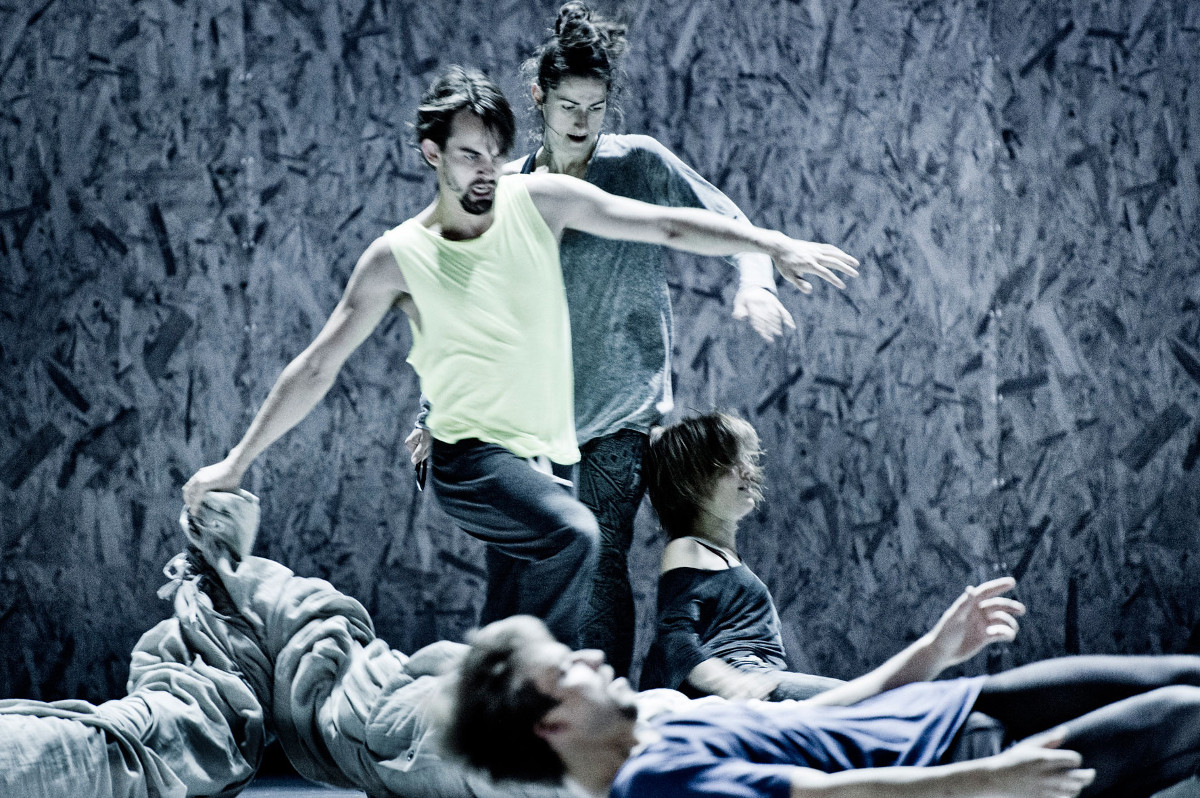
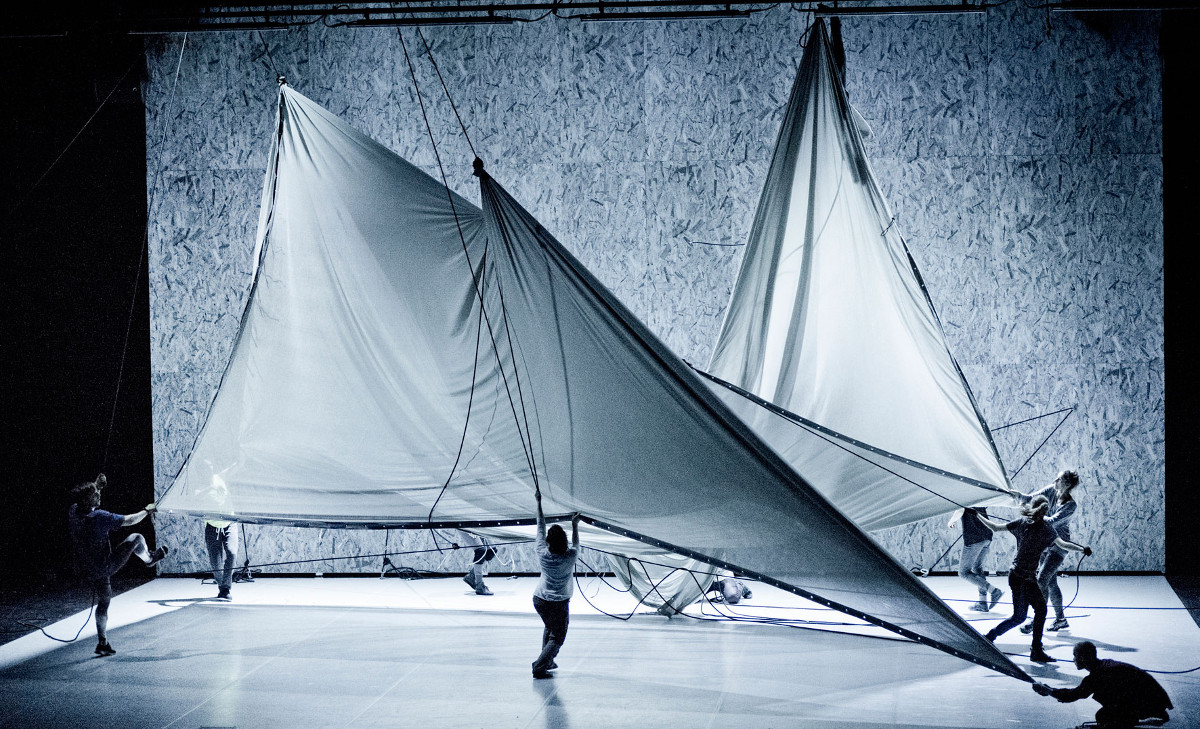
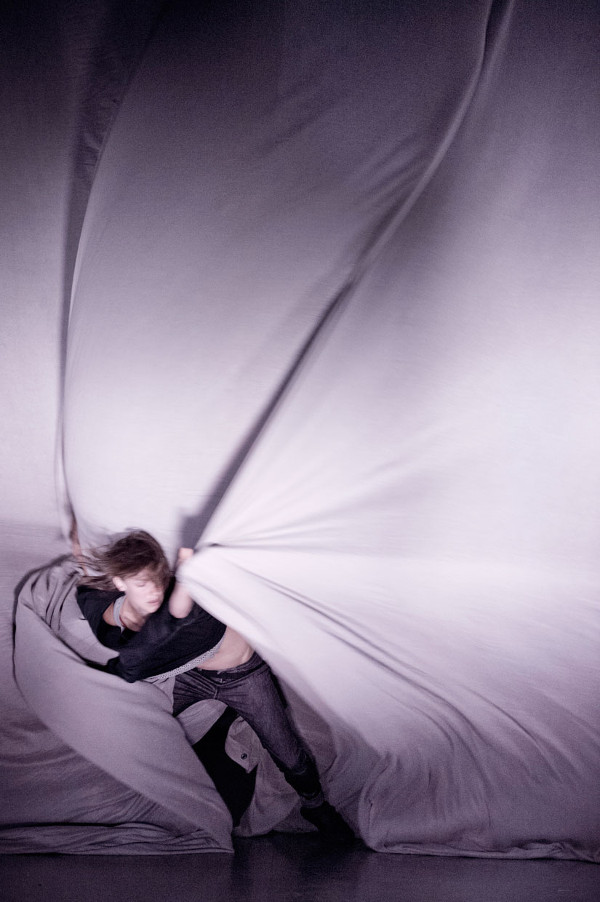
Folds full of light and sound - Van Dinther’s Plateau Effect for Cullberg Ballet
Jefta van Dinther (SE/NL) creates an overwhelming world for the
international Cullberg Ballet (Stockholm) where dance, materials,
sound and light each play an equal role. The force and the effort of
the dancers, in interplay with the materials, generates beautiful
images on the stage. The plateau effect is felt, and certainly not
uninteresting.…
…The lighting design of Minna Tiikkainen pulsates, later
halting in movement. The intimate and investigative turns into the
grand and inexorable.…
…The stage looks architectural, functional. It sucks you into
the scene… The music is piercing, the light intense,
until the situation is no longer sustainable and the textile is
lowered again.
— Lisa Reinheimer, 11.7.2013 / dansmagazine.nl (translation at jeftavandinther.com)
…More than an one-man creation, the work is an impressive multi-disciplinary affair, mixing movement, light (Minna Tiikkainen), sound (David Kiers) and set design (SIMKA). The choreography arrives through the integration of these elements, creating a richness rarely seen on this type of platform.…
— Daniel Hayward, Nov 2013 / Dance Europe, issue 178
…Here, in the production ‘plateau effect’, again working with Tiikkainen and Kiers as an equal artistic partners, the spheres remain separate: Although the over loud, bass-heavy music has been dragging alone in a club eight-like wobble, Minna Tiikkainen shows again as ‘the Queen of Light’ all her finesse while the famous Cullberg Ballet dancers act with relentless dedication
— Elisabeth Nehring, 26.02.2014 / deutschlandfunk.de
In this performance choreographer Mette Ingvartsen is staging perceptions and sensations of nature with a question what is the relationship between the animate and the inanimate world. In the core of the performance are materials like confetti and safety blankets. The outcome is a performance that literally throws things around. Materials fly through the air giving rise to a landscape that constantly transforms itself.
The concept of light was to create a dystopian atmosphere where no natural light exists any longer. Very cold light from unnatural angles combined with strong colours supported both the materials and the artificiality of the setting. By choosing carefully the directions of light, it was or revealing or hiding the performers and focus was shifting between the dancers and the floating materials.
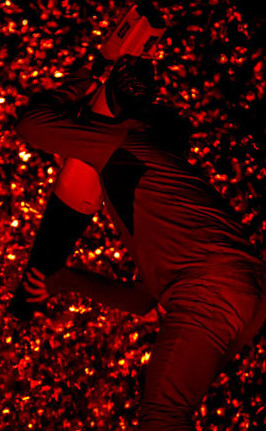
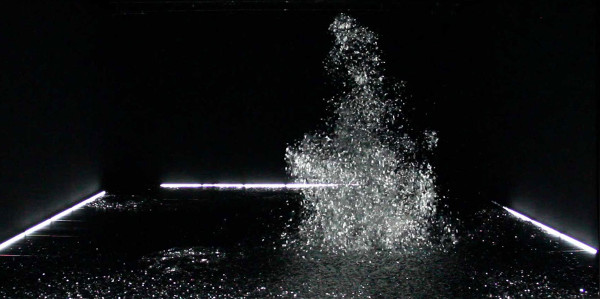
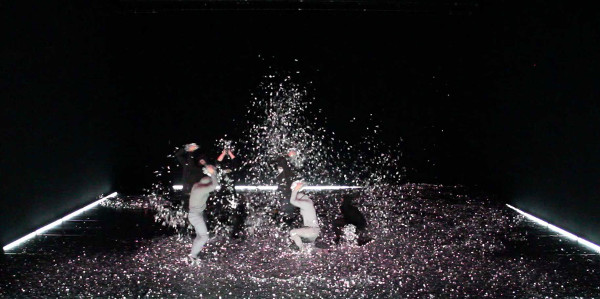
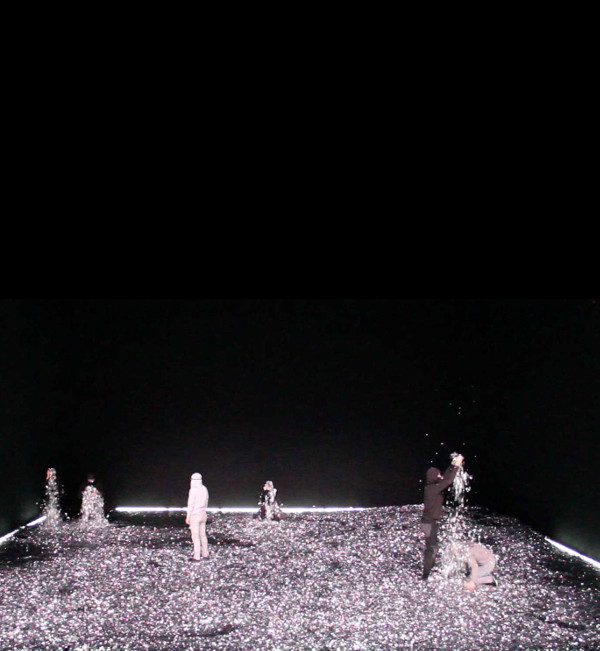
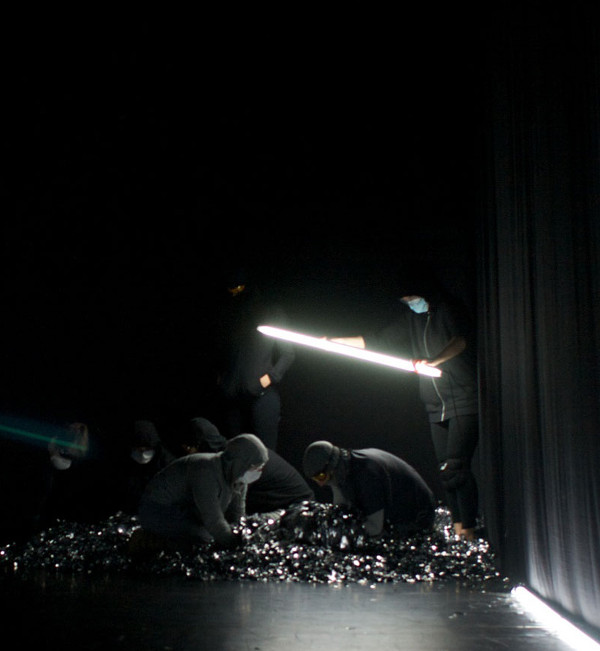
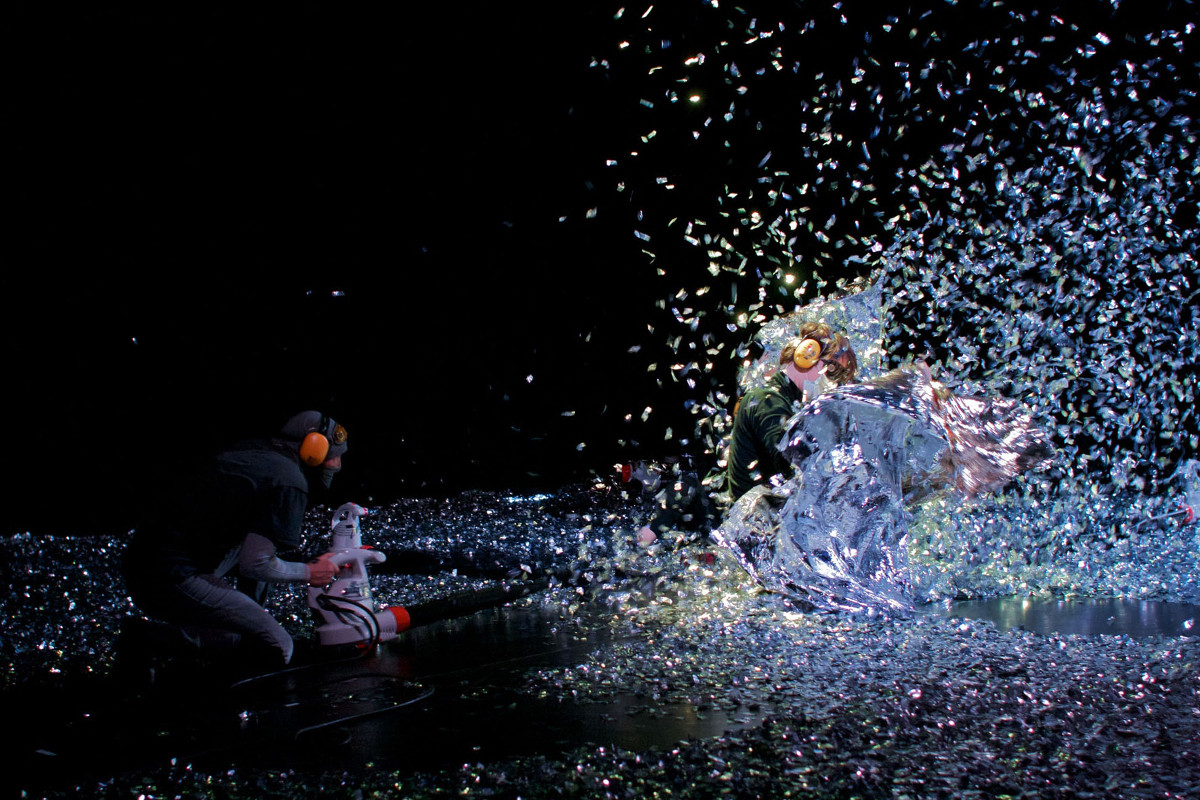
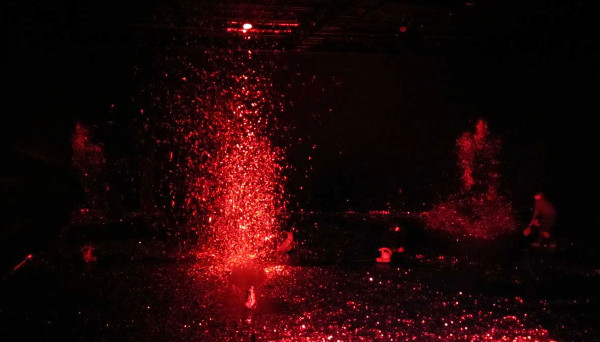
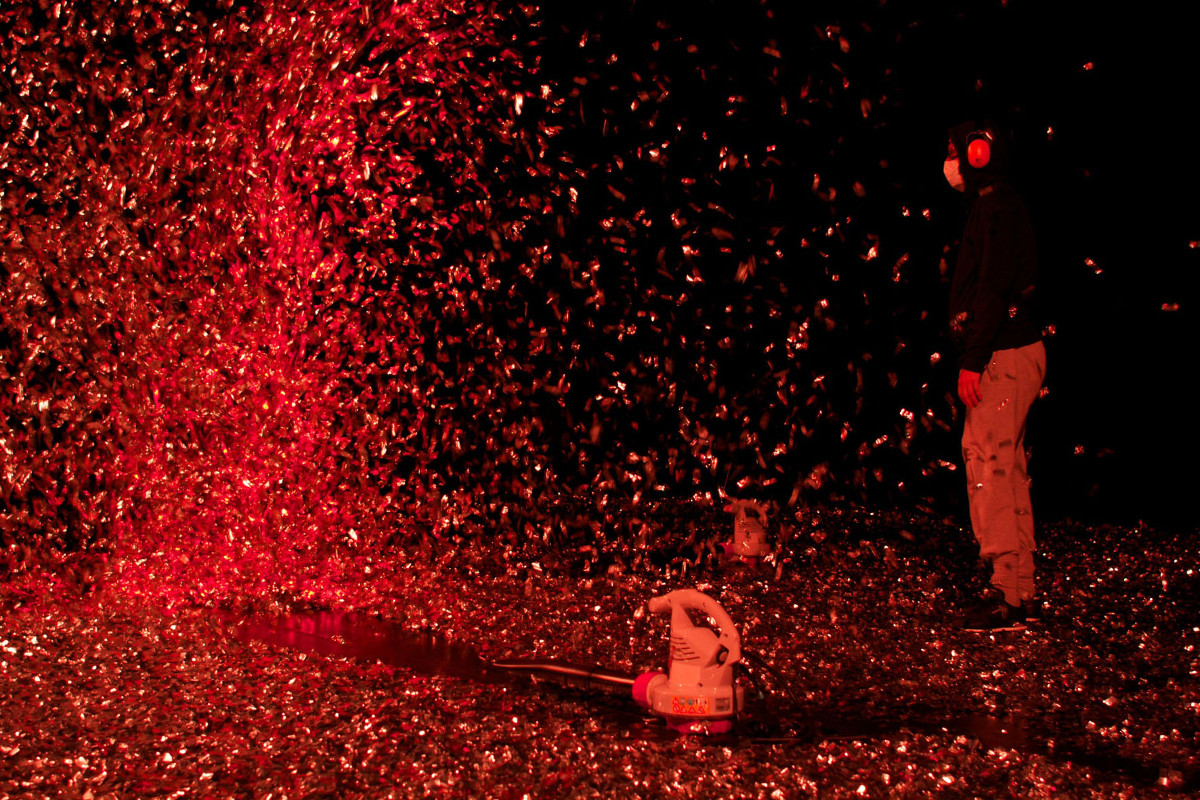
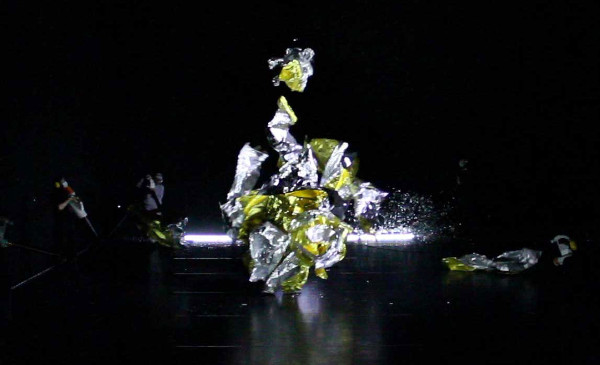
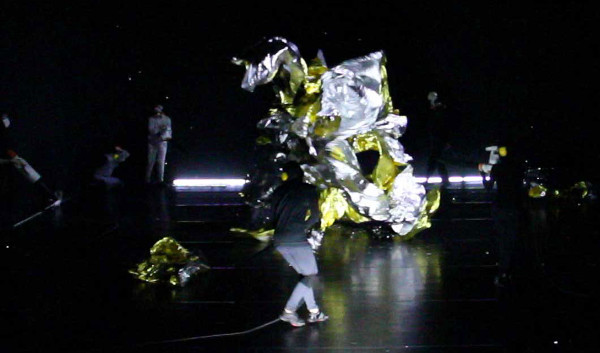
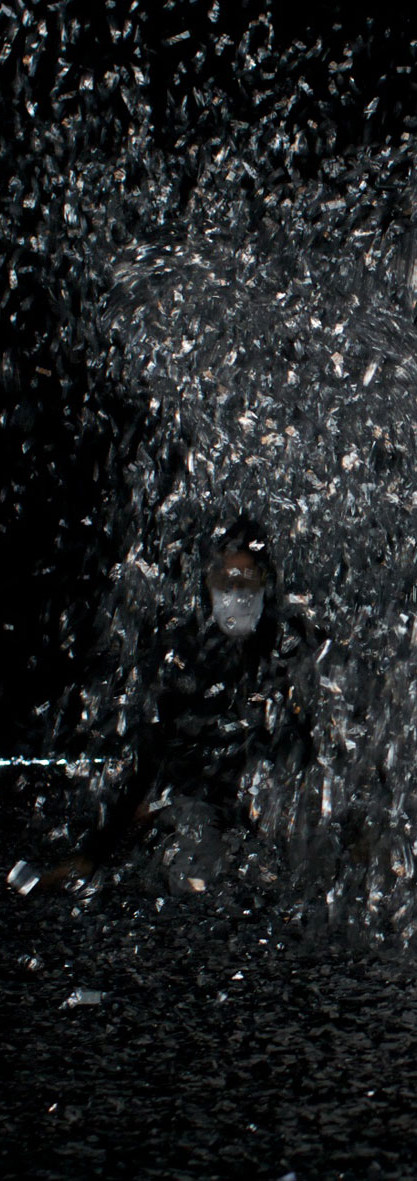
…Fireflies dance in the flickering light, low level ambient sound — a mesmerising, soothing and beautiful sight. Hypnotised we watch and watch and watch. I am reminded of Yayoi Kusama’s work, the conceptual art of Félix González-Torres and Scott Fitzgerald’s Valley of Ashes in The Great Gatsby. Minna Tiikkainen’s lighting is integral to this piece about the inanimate world made animate. Choreography of shifting topography. Dancing debris…
— Vera Liber / British Theatre Guide 18.10.2014
Appropriately embedded in the Platform Theatre , Central St Martins, Mette Ingvartsen’s The Artificial Nature Project is about the manipulation of objects, the shifting landscapes they create and a devolved focus on the human performer. For the first quarter of the show, large silver confetti showers down from the curtain rig onto a blacked-out stage. A slither of light illuminates the paper par- ticles and transforms them into swarms of fire flies. Mesmeric and trippy, one begins to see all kinds of images: bubbles, star constellations, a sparkly curtain rising up from the floor.
As more light is cast on the stage we can make out the performers covered from head to toe in protective clothing like workers in a nuclear plant. They travel around the stage with efficient functionality, handling and sorting the various materials and objects, moving only to fulfil specific tasks. There’s no dance technique or phrasing, Ingvartsen’s team deflect our gaze away from them and on to the materials which they so skilfully arrange and rearrange. It’s very refreshing. While not mechanical like robots, they work the stage like theatre technicians, industrious, calm and strangely reassuring. As the falling paper particles drift and pile up on stage the performers slowly start sifting through it with their hands and bodies. They mobilise the paper slowly and with such control that it takes on a liquid property, like mercury oozing from their bodies. Again I’m amazed at how Ingvartsen and her team can mess with my visual perspective.
The next landscapes become vertical. As the workers hurl and scatter the silver confetti up in the air, they form huge geysers, then through the use of tools — leaf blowers, large reflective boards and changing lighting states, the materials continue to metamorphose, conveying other images and emotional states. When red lighting is cast on the silver particles, they take on a more menacing, violent property. The leaf blowers, set on the heaps of paper, make intense noise and chaos as they fire the particles up to the roof in explosive fireworks and bonfires. While the performers are still in control, there is a new urgency about them, similar to that of riot police or firemen on red alert. We can hear their panting as their movements become more vigorous and it’s striking how this state of emergency contrasts with the cool, untroubled atmosphere that preceded it. When sheets of foil are blasted into the air by the blowers and swirled around like clothes in a washing machine, they suggest an outer space sensation of disconnection and rootlessness. As the sheets bunch up together they take on the appearance of a huge monster, an artificial life that could easily have been created by digital technology on a screen.
There’s no end to the rich visual content that Ingvartsen is able to morph from very little. Hers is the skill of being able to harness the properties of simple materials and transform them into a theatrical spectacle and while The Artificial Nature Project is a little long, it’s an exciting start to the Northern Light season.
— Josephine Leask, 22.9.2014 / londondance.com
…Eventually, after, what, half an hour, the floor is covered with a thick, even layer of the stuff. The light drops and silver metallic veneer turns to marshy, Martian green turns to a peaty bog turns to an oil slick. The light catches the edges. You swear you see the patterns of cities lit up at night and seen from the sky. Then, in come the leafblowers. (Of course, they do.) And, lit red, that geyser becomes a volcano, spewing lava upwards and destroying the perfectly flat landscape…
— Matt Trueman, 28.9.2014 / mattrueman.org
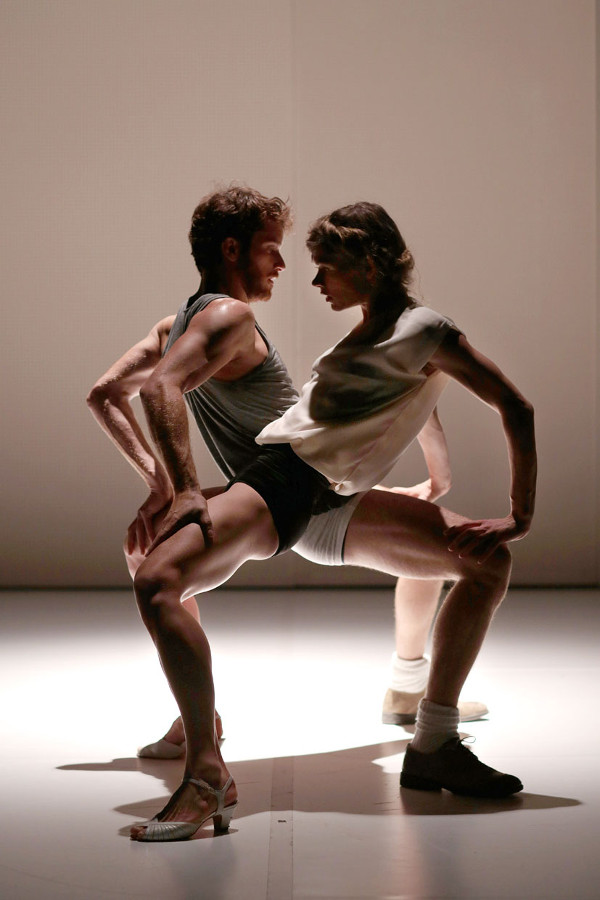
In 4: STILL LIFE choreographer Nicole Beutler distils elements from the long history of partner dance. On stage are a woman and a man. Their physicality and actions are guided by the principles of body geometry, and the geometry of space and light. Beutler drew inspiration from the early twentieth-century Bauhaus movement for this ‘mechanical ballet’ dance duet.
Lighting Design was simple and all focus was put towards the shadows, which play essential role in making the images. Light plays with directionality shifting the stage images from “flat” to texturized and rich 3-dimentional world. The end image of a “licht spiele” is a hommage to Bauhaus movement and especially to László Moholy-Nagy.
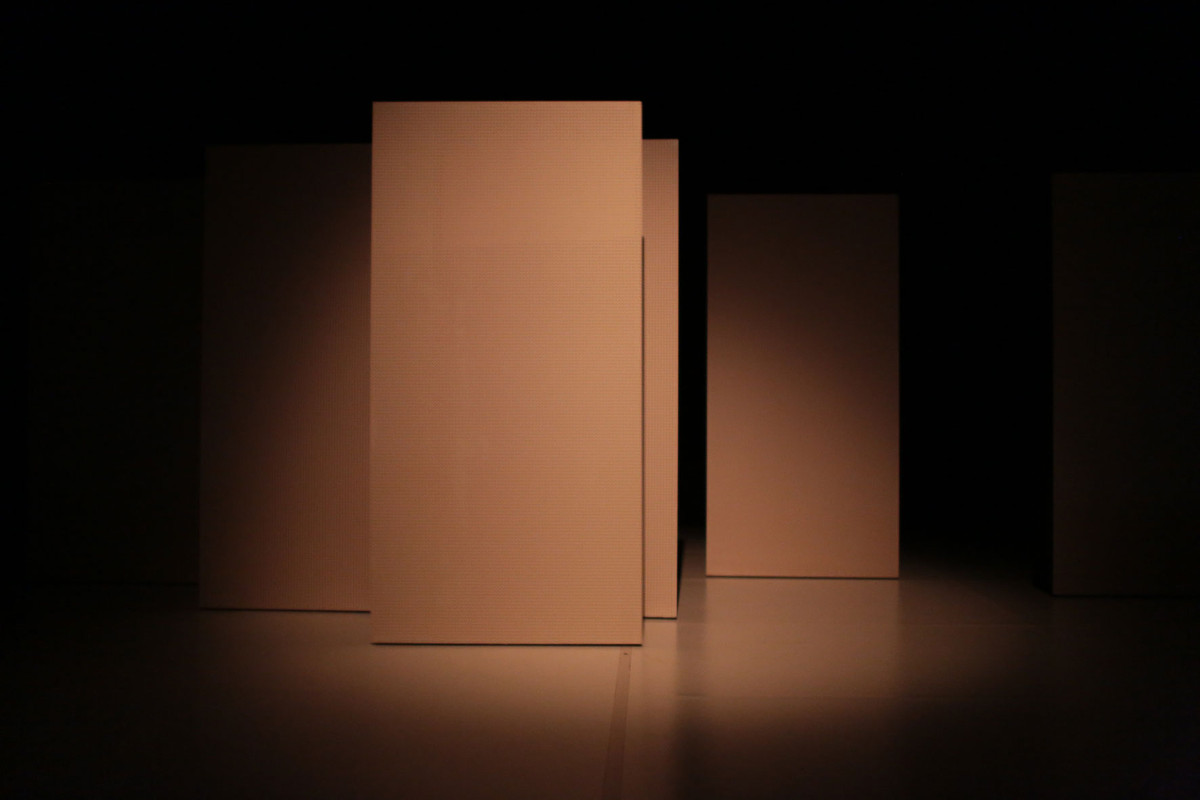
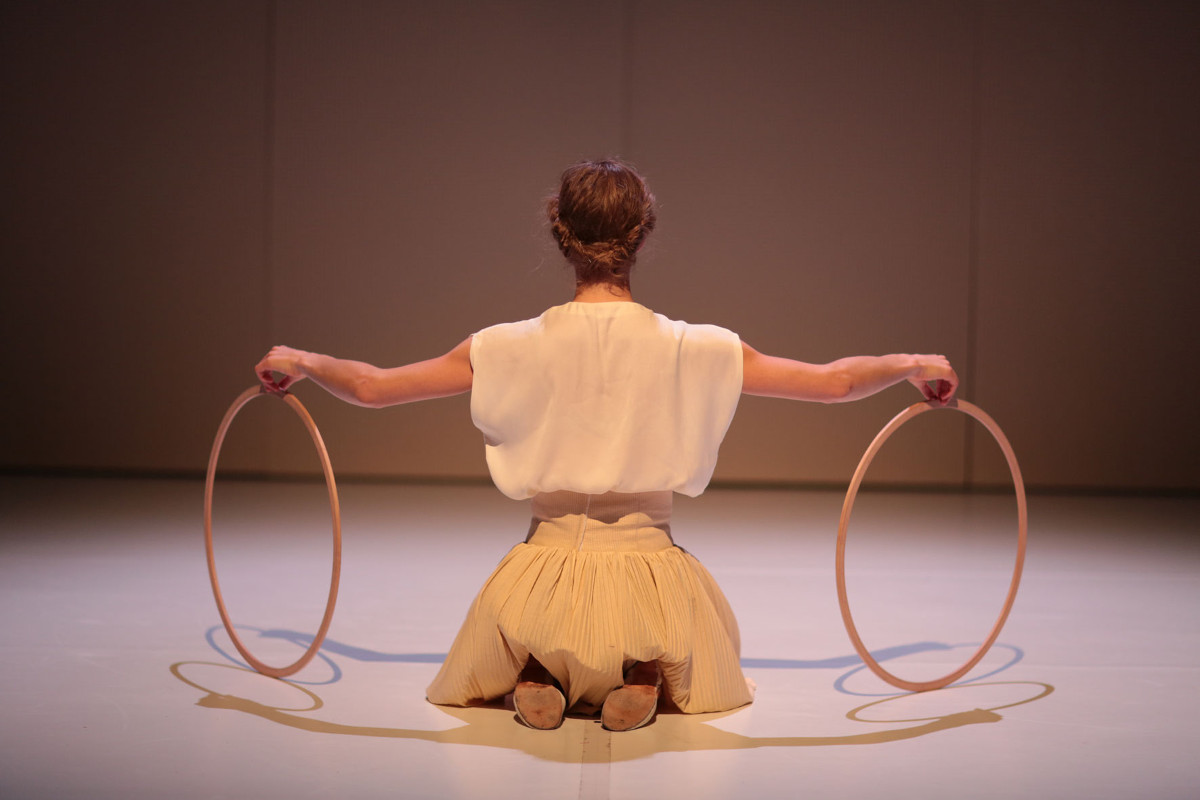
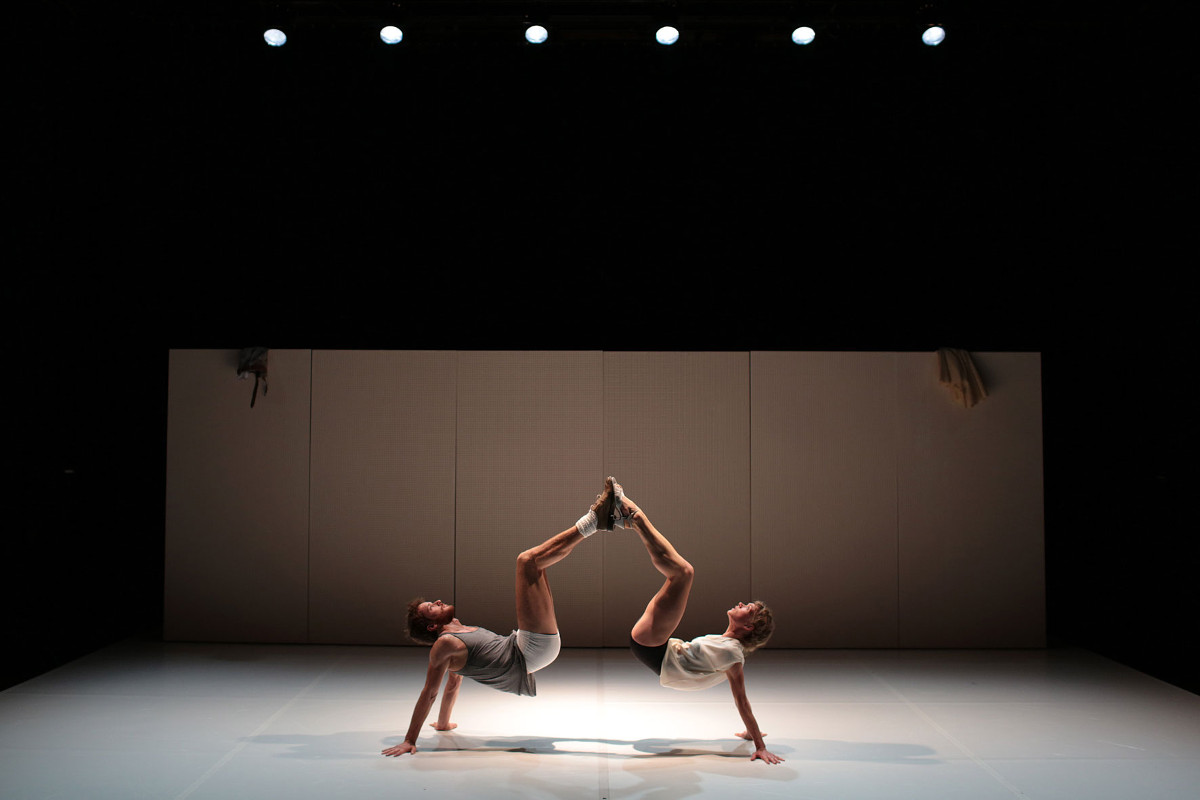
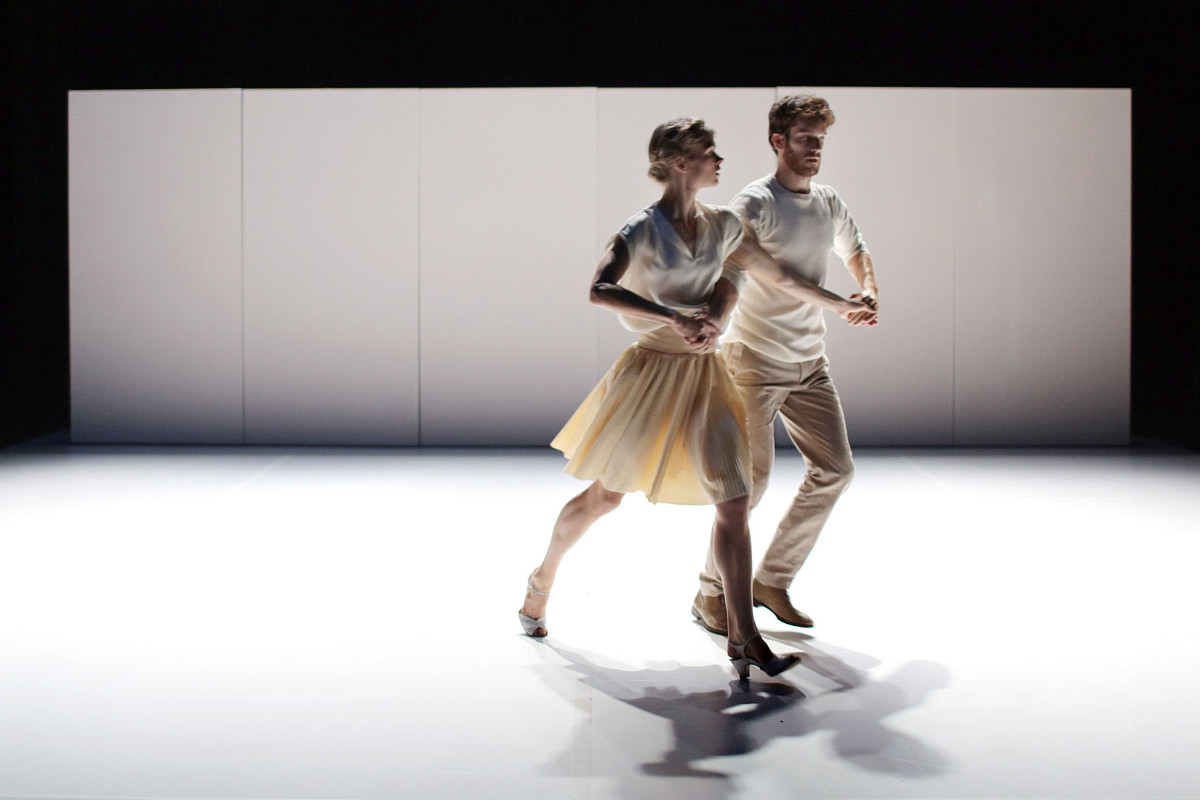
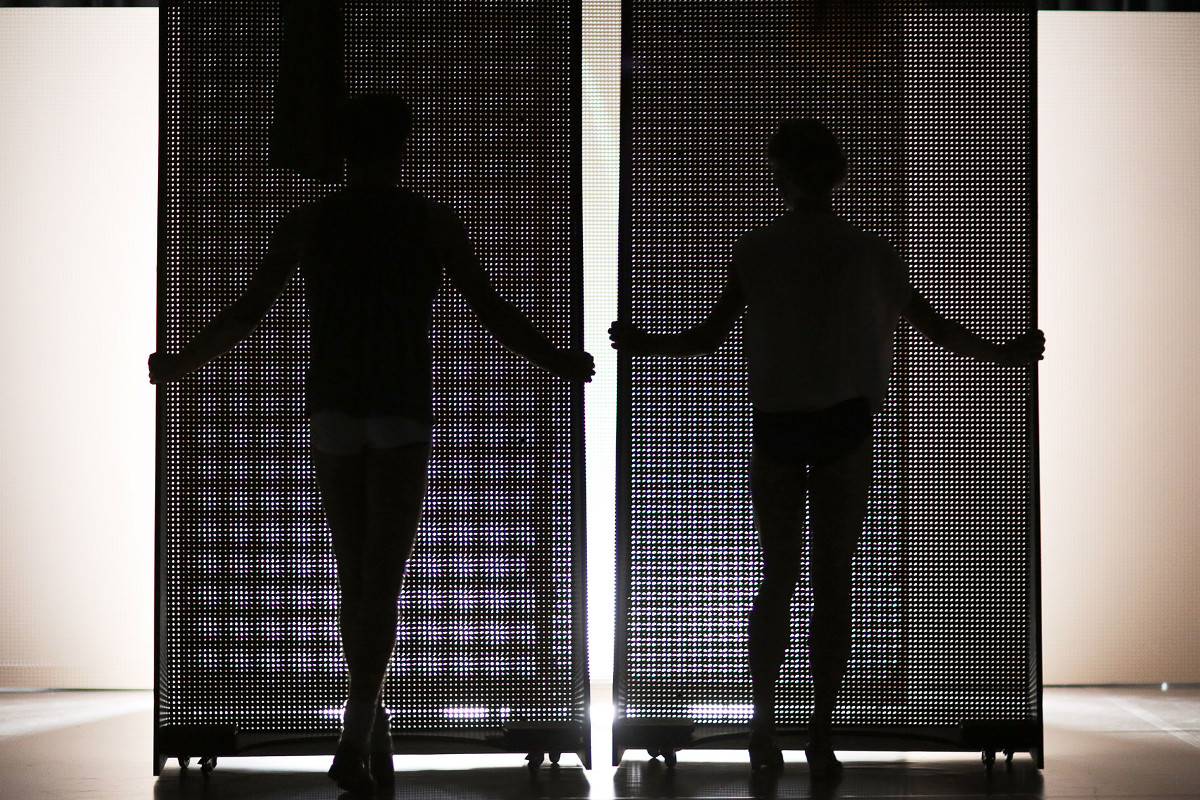
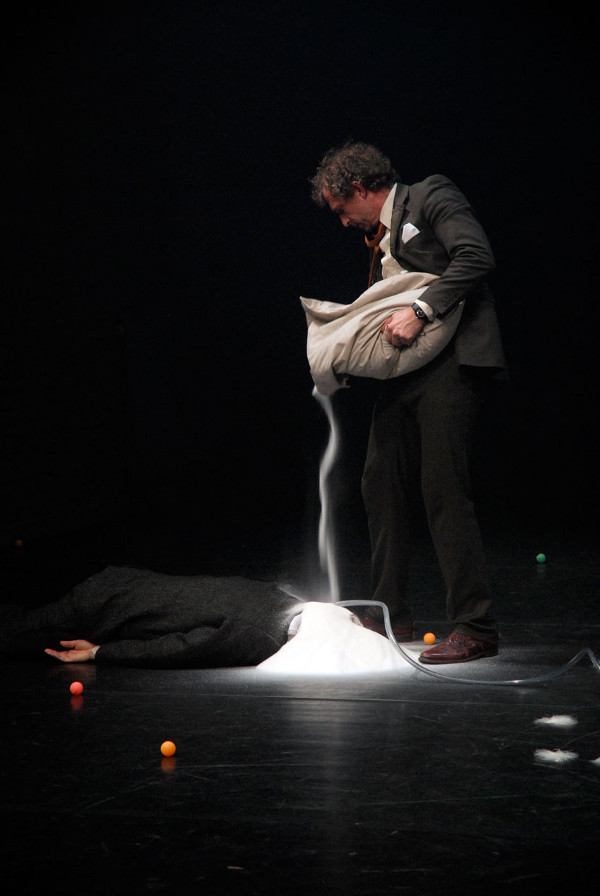
Dark Matter is a performance by Kate McIntosh in which she approaches the big scientific-philosophical questions in a show-biz, late-night theatre style. Together with her two “assistants” she illustrates time and gravity, being and not being with a series of improvised home-science experiments.
The Lighting design was based on two main states; a laboratory like athmosphere with more general lighting, and a cabaret type athmosphere with cliché colors and usage of spotlights. Main lighting element was a “line of light” created with a row of square shape lamps and depending of mood on stage and different scenes this element was changing its form and color.
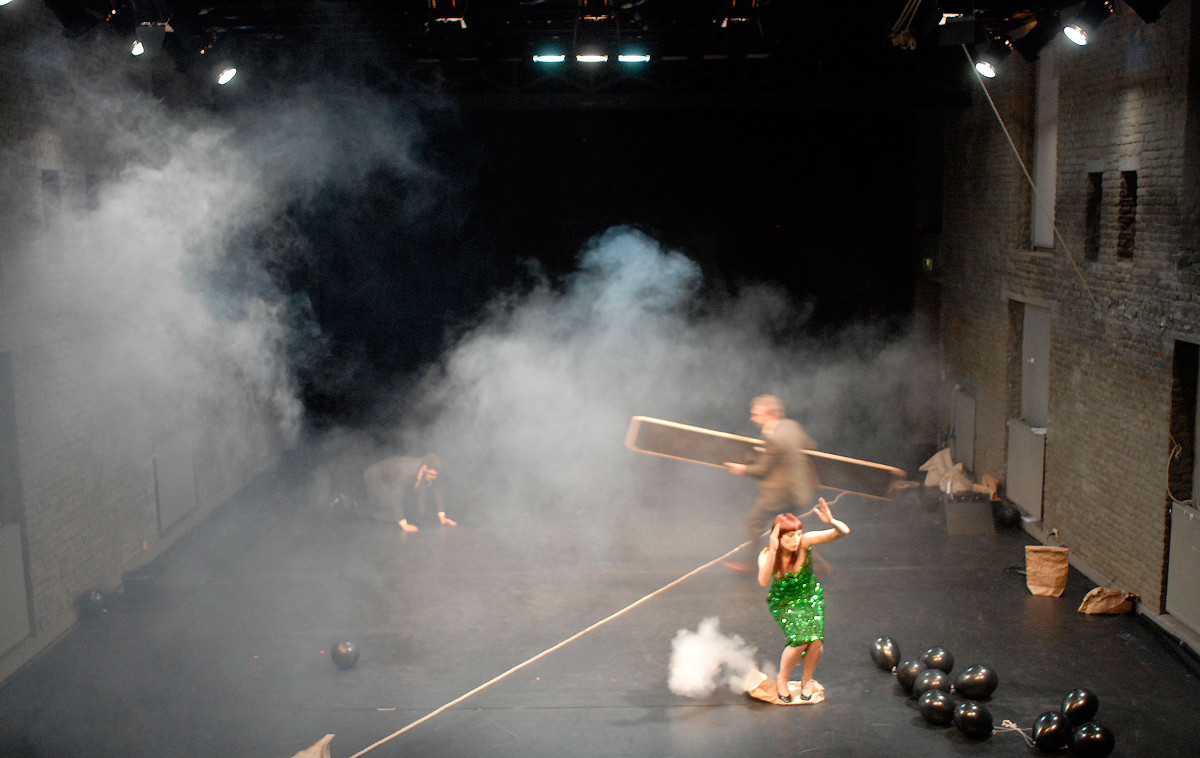
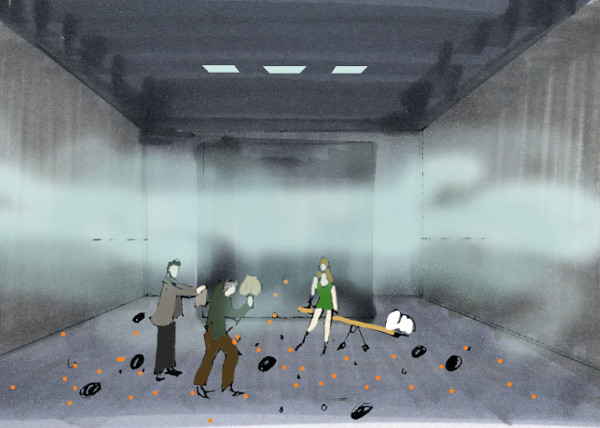
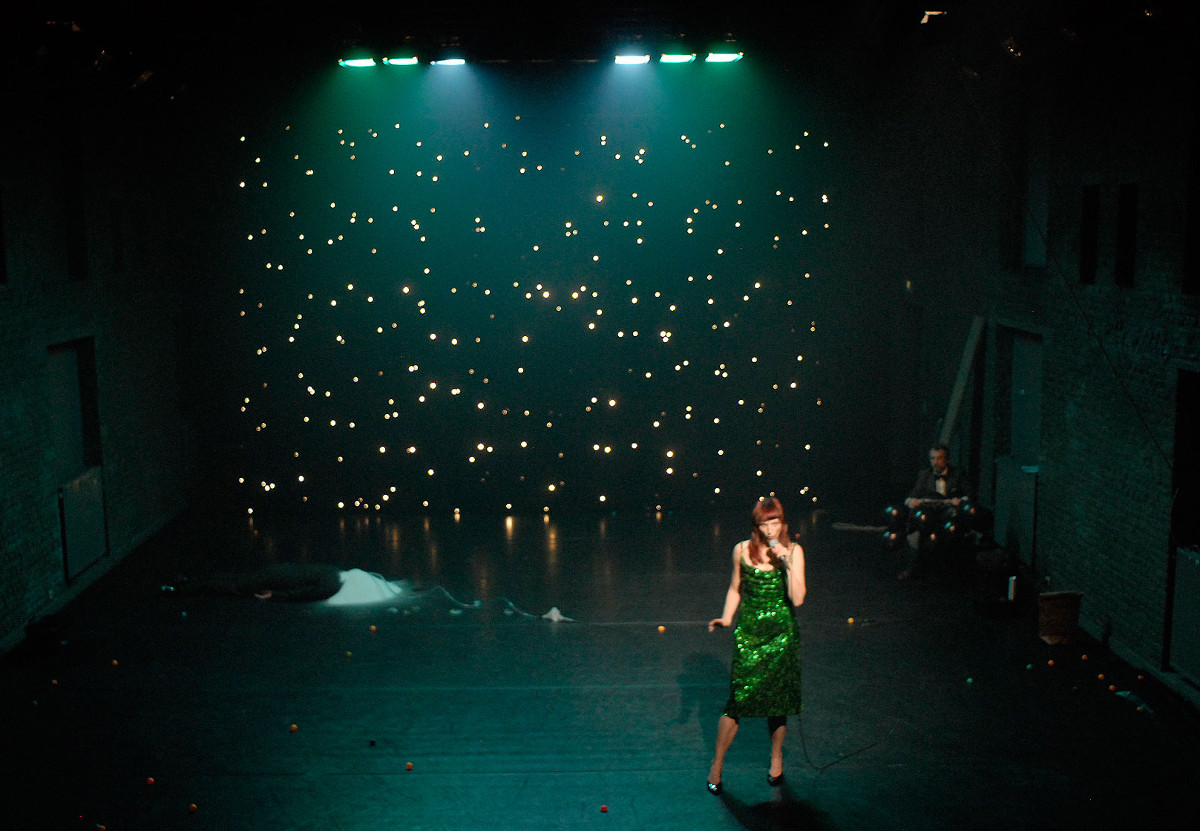
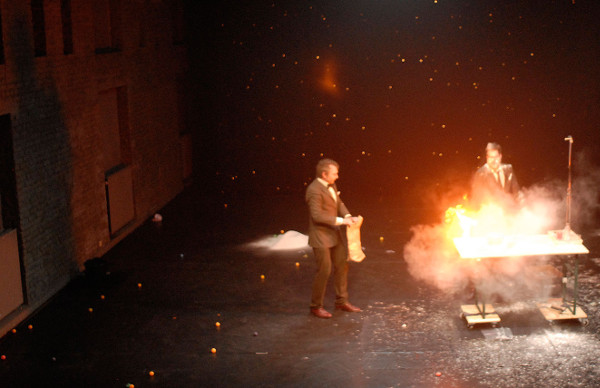
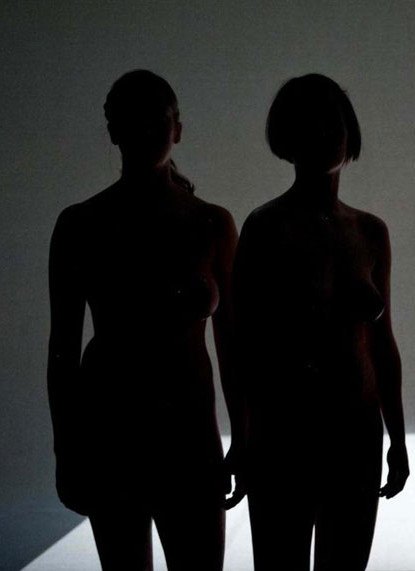
In The Dry Piece disturbed relationship between beauty ideals and contemporary feminine identity are scrutinized. In this performance choreographer Keren Levi uses theatre technique as Photoshop paintbrush and contemplates the gap between glamour and labour in a show performed by four naked female dancers behind a projection screen. Inspired by 1930’s musicals of Busby Berkeley and the “The Beauty Myth”, by the postfeminist writer Naomi Wolf, The Dry Piece confronts the spectators with the violence that our gaze inflicts upon the body and its possible disappearance.
Lighting Design was done to the stage area and to the simultaneusly projected image that was registering the performers real-time from top angle. These two different light spaces had their own laws of composition and the usage of live camera challenged the creation of lighting to its maximum. The end result is a harmonious intercourse between stage image and projected image The performance received Dioraphte Dance Prize 2013 from Dutch Dance Festival
The work that had the most impact was considered to be remarkably fresh. We saw very skilled dancers, a beautiful staging and an impressive soundscape. It is esthetic, erotic and simply profoundly human. The work which is performed in a small space becomes a point of departure for the audience to immerse themselves in the limitless space of their imagination. With subtle and gentle movements and the use of new media, this reflects the core values of the award.
— The jury of the Dioraphte Award 2013
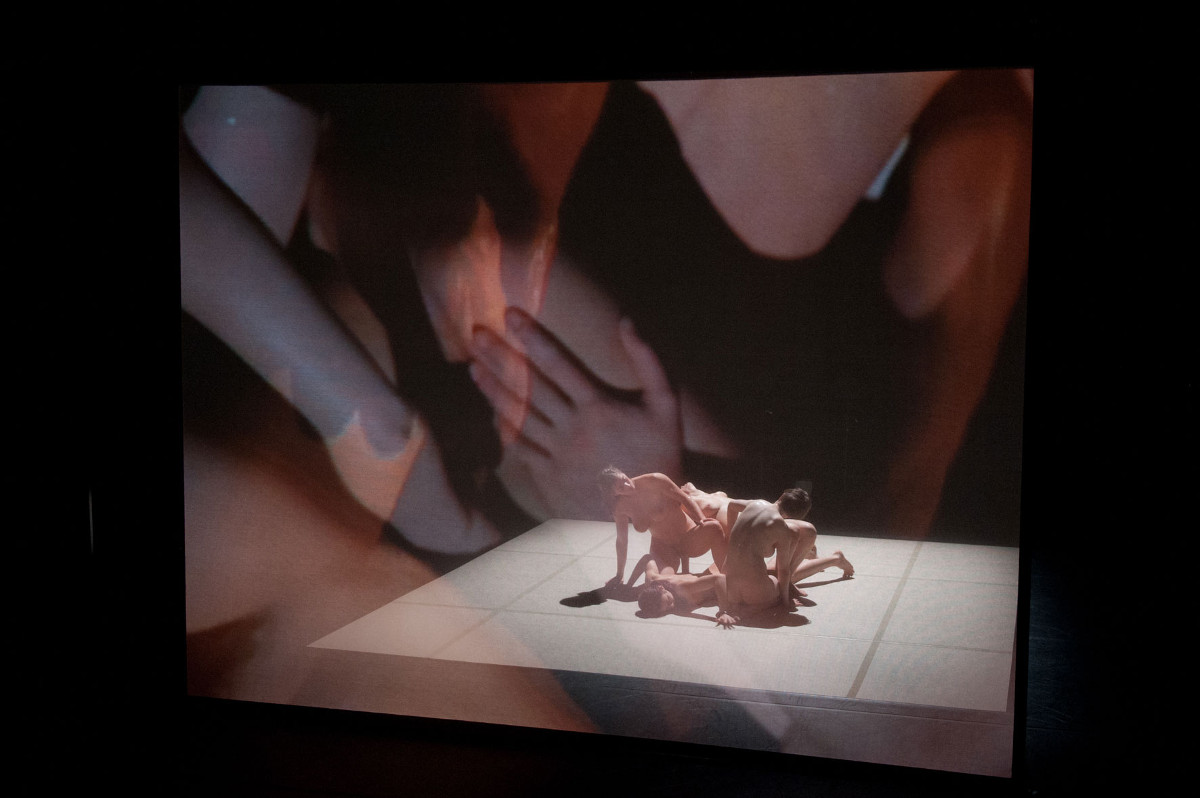
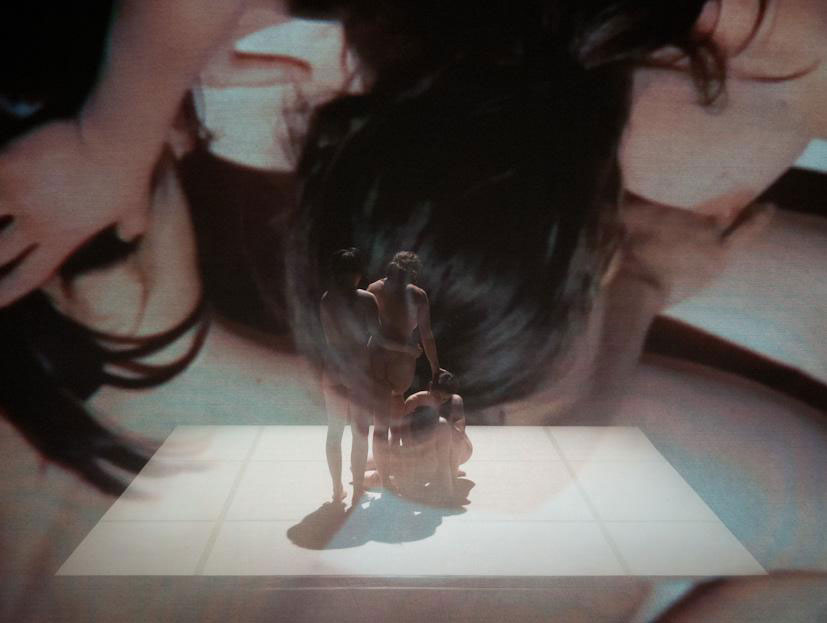
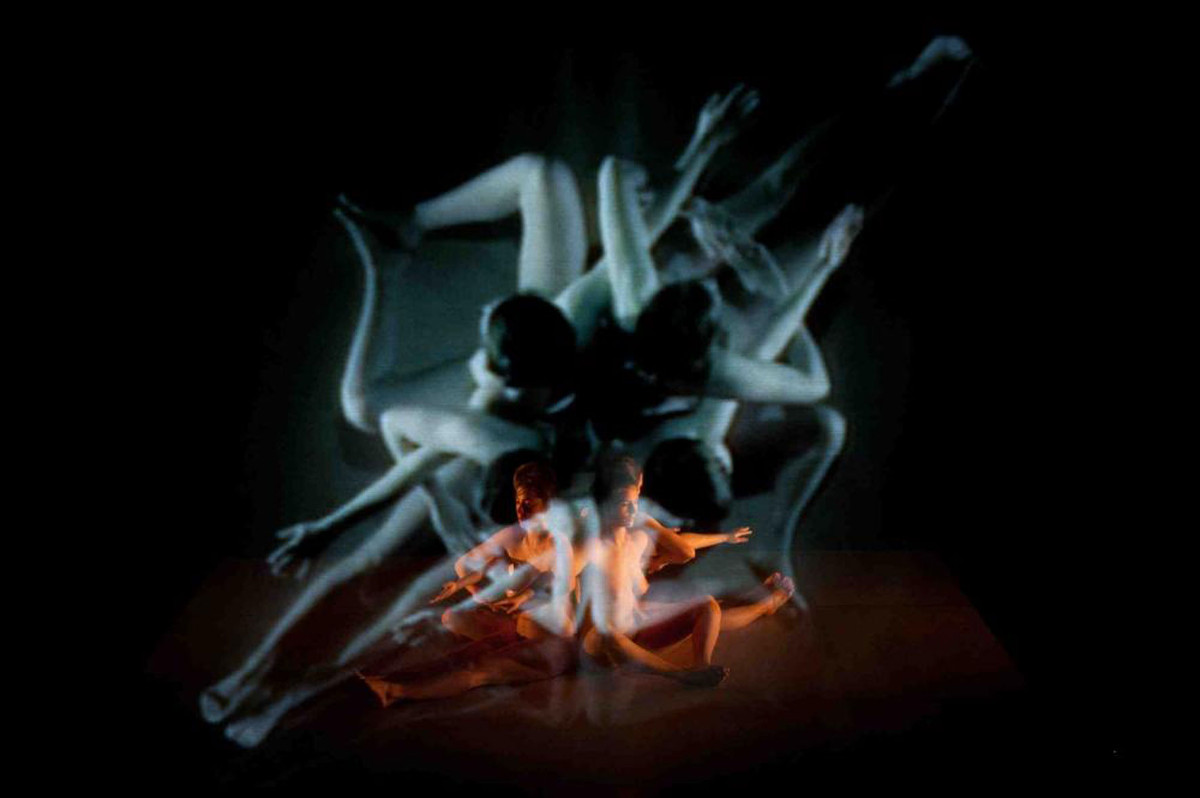
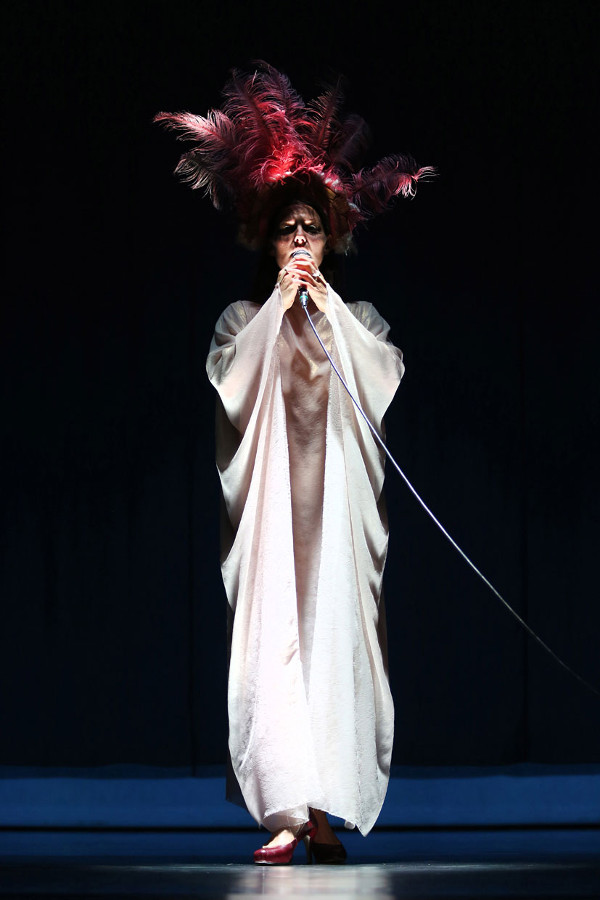
In 5: ECHO, choreographer Nicole Beutler enters into a dialogue with the history of dance. Part one is inspired by the radical performative work by Koert Stuyf and Ellen Edinoff, who blew up the conventions of the art of dance in the Netherlands in the 70’s. For part two Beutler reworked the choreography Vermiljoen (1978, Bianca van Dillen, Dansproduktie) creating a piece for six dancers.
The lighting design was challenged by Theun Mosks silver decor and this highly reflective space required an approach specific to it. Indirect lighting was used to create reflections and specific angles of light were used to create an effect of mirrored image.
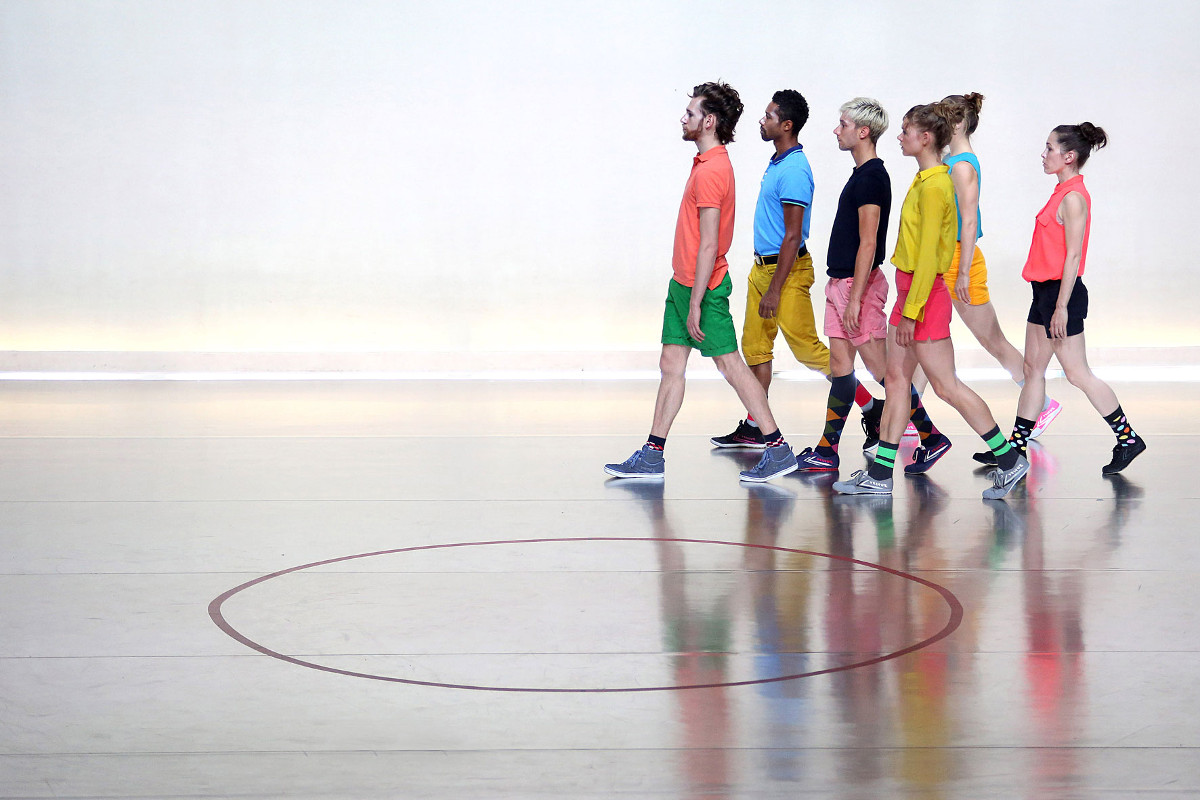
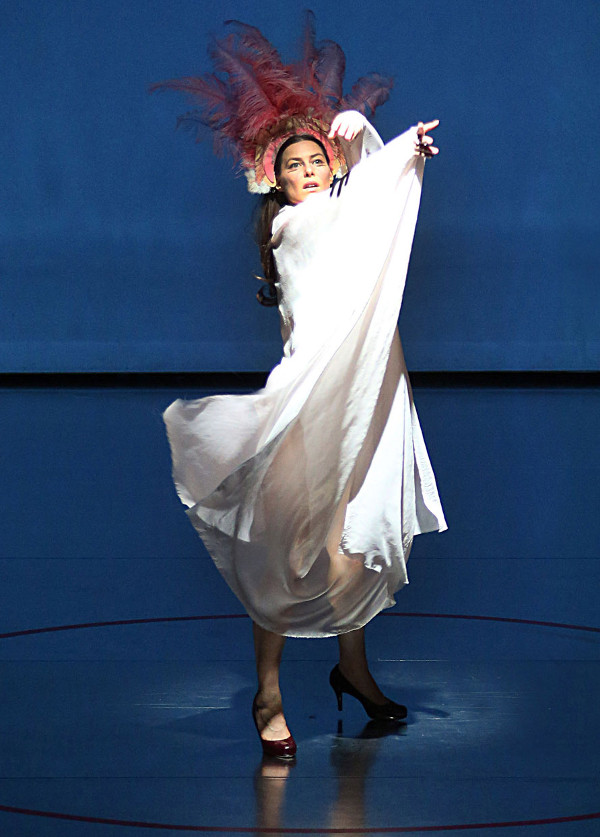
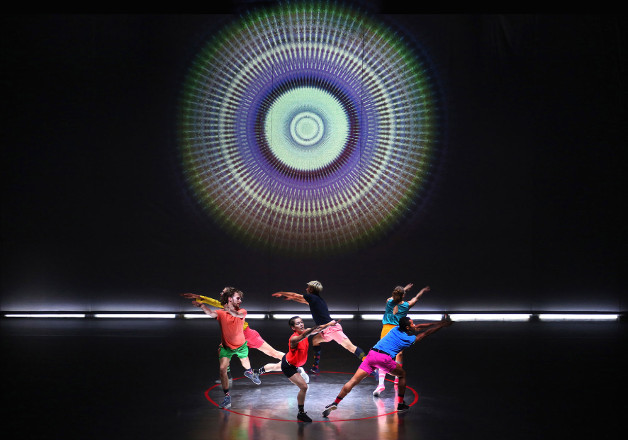
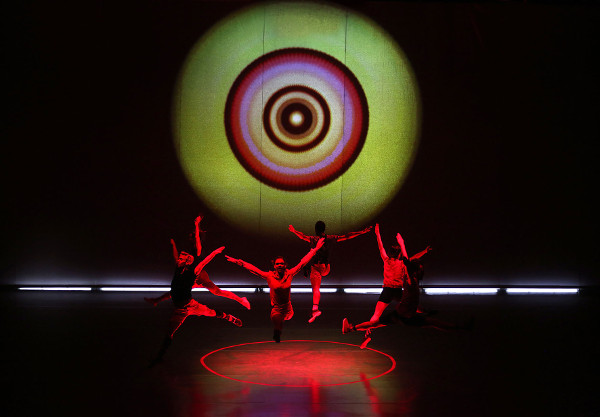
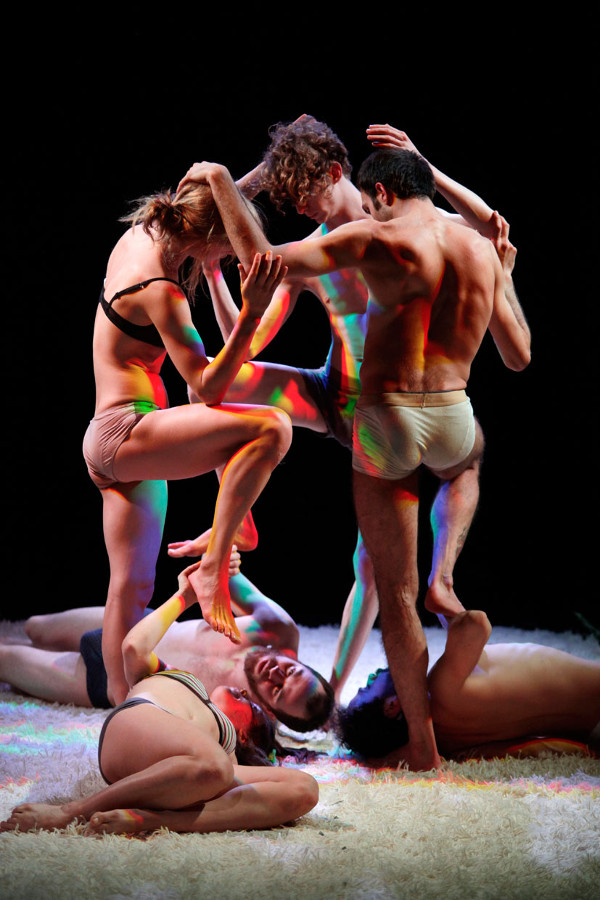
In 3: The Garden Nicole Beutler examines the artificial distinction between nature and culture. Following in the footsteps of the Romanticists, Beutler explores the utopian desire to go ‘back to nature’. She found her inspiration in the works of the pre-Socratic natural philosophers, the Bible, the work of Hieronymus Bosch and Edouard Manet, song lyrics by the anti-pop band Einstürzende Neubauten, and the utopian artist community Monte Verità.
The lighting was concentrated on the small “stage area“ of carpet that reflected spill light to the surrounding space. This carpet was a living visual canvas, “a paradise” inside which different utopian scenes could happen.
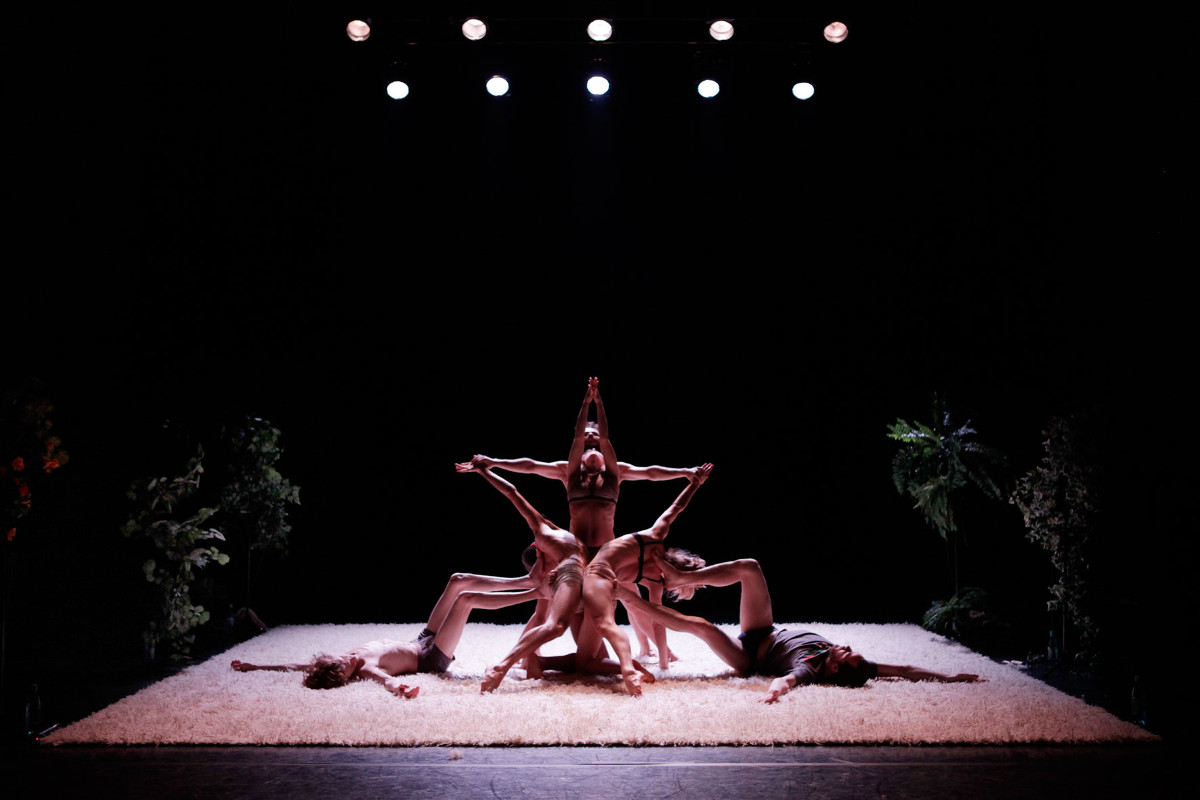
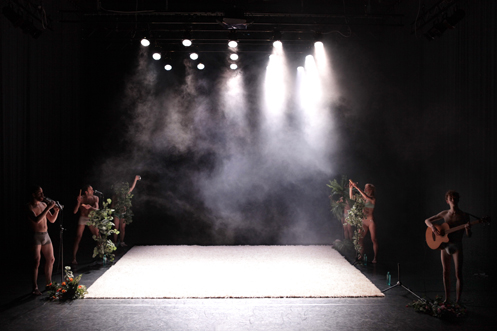
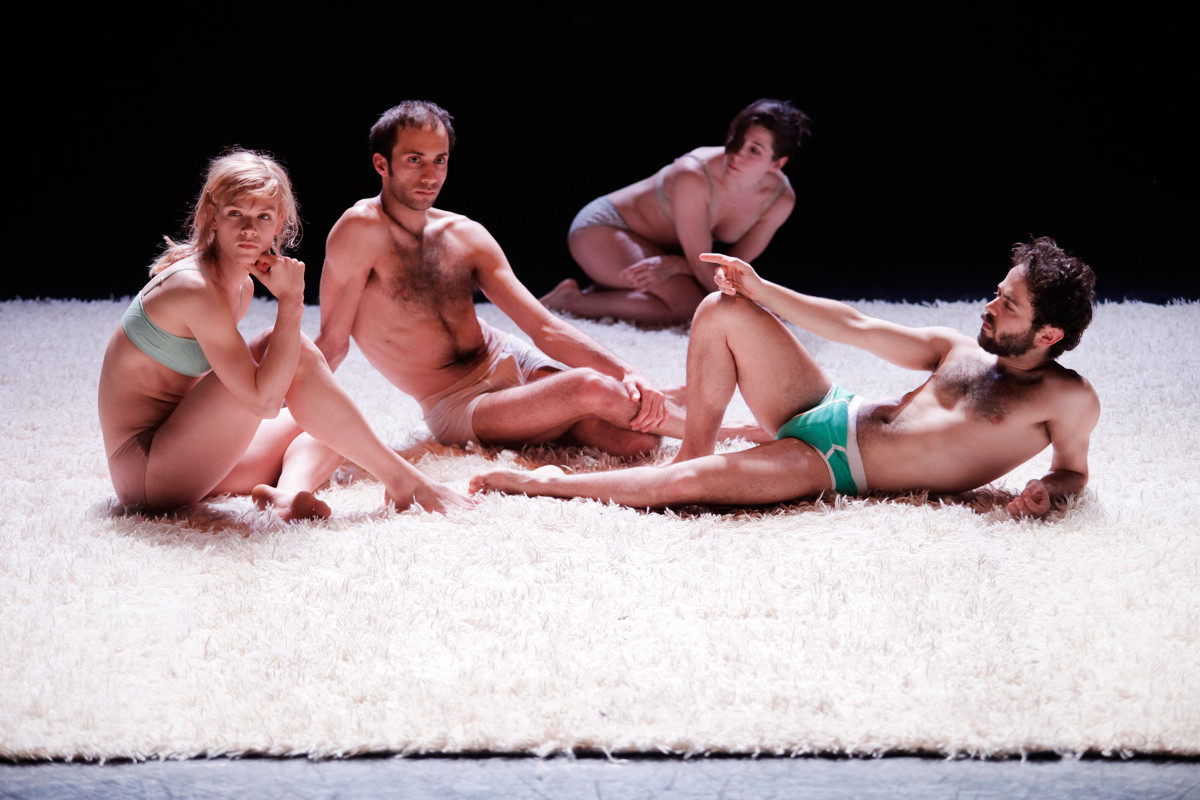
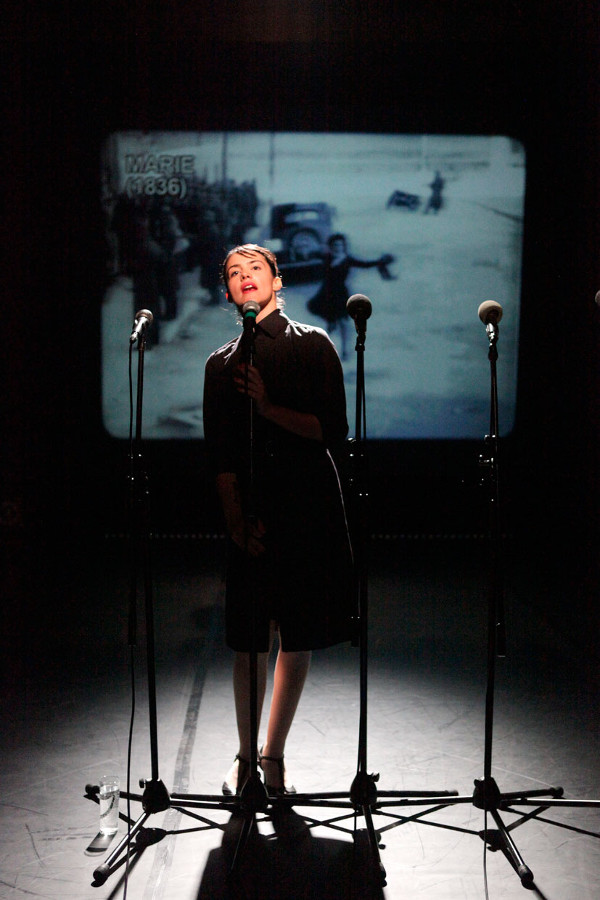
1: Songs is a solo performance presented as a concert. The performer surrenders her voice to the intense words of tragic female figures from the history of theatre, figures such as Antigone, Medea and Gretchen. She performs in front of 5 michrophones and is captured by their powerful symbolic meaning.
Lighting concept follows a logic of an concert and is changing for each song. The athmospere travels from romantic and beautiful to cold harsh and calculating. From a rock concert to the world of film noir.
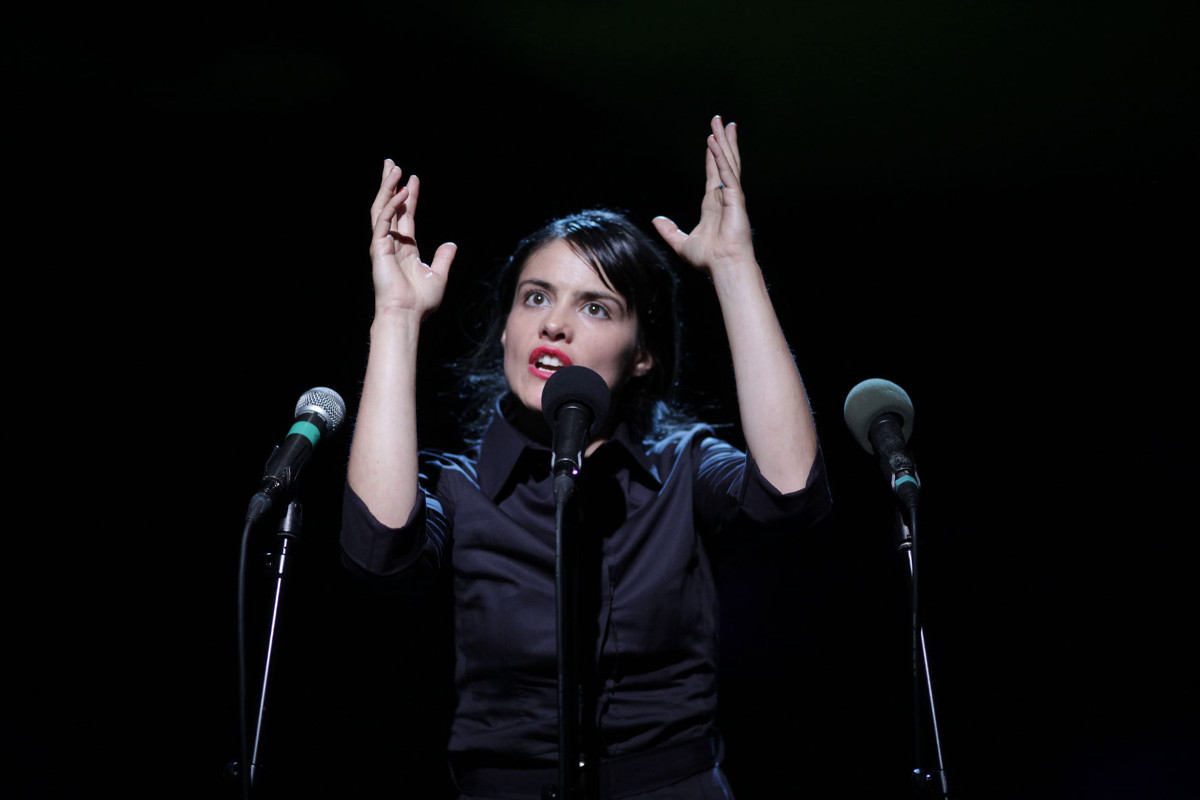
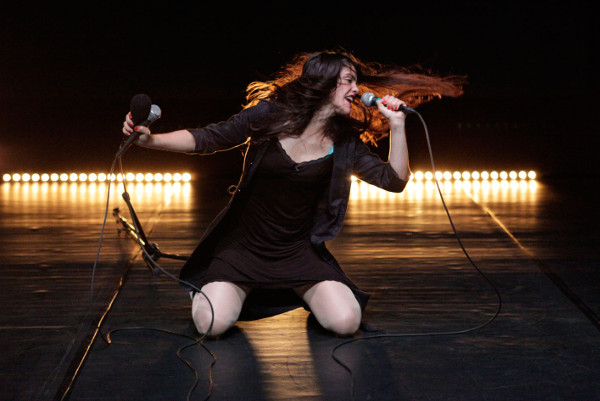
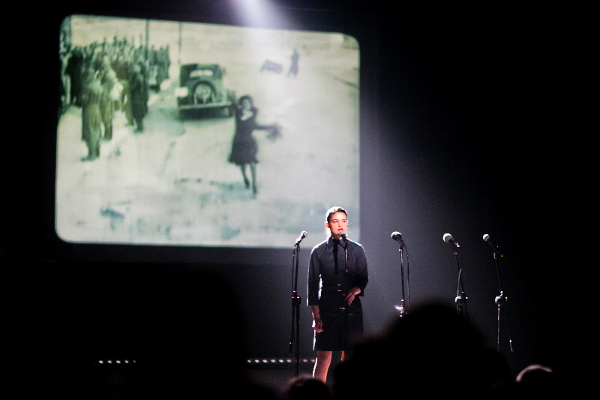
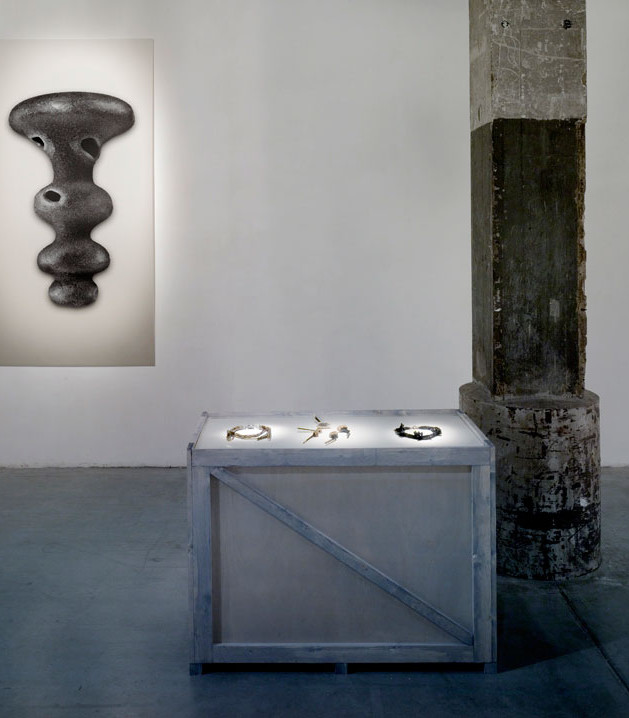
Very often jewellery is presented in glass covered white vitrines in a white neutral gallery spaces. These two artists wanted to have a special style and location for their exhibition. They chose an old warehouse north of Amsterdam and the challenge was to transform this big space into an interesting exhibition where the small-sized artwork would be in focus.
The theme of the jewellery work was loosly “nature” and the artists asked me to create a lighting for the exhibition that would take into account their theme and the location. The architecture of the exhibition was desided to follow the history of the location as a warehouse. Wooden “transportation” boxes were built for the jewellery to be placed on.
Loods6 is a big industrial hall with almost no daylight and very poor lighting. I decided to build a “light wall” to give the windowless space a general daylight athmosphere, From opposite side I added cool light that gave the space slightly colder tone and highlighted the colors of the venue's floor and the boxes. jewellery itself was lit with very narrow angle halogen lights (pinspots) that also had slight color correction towards daylight. This correction of color temperature was picking up the beautiful and detailed colors of the jewellery. The images of the jewellery on the wall were lit with no color correction creating contrast and warmth in the space.
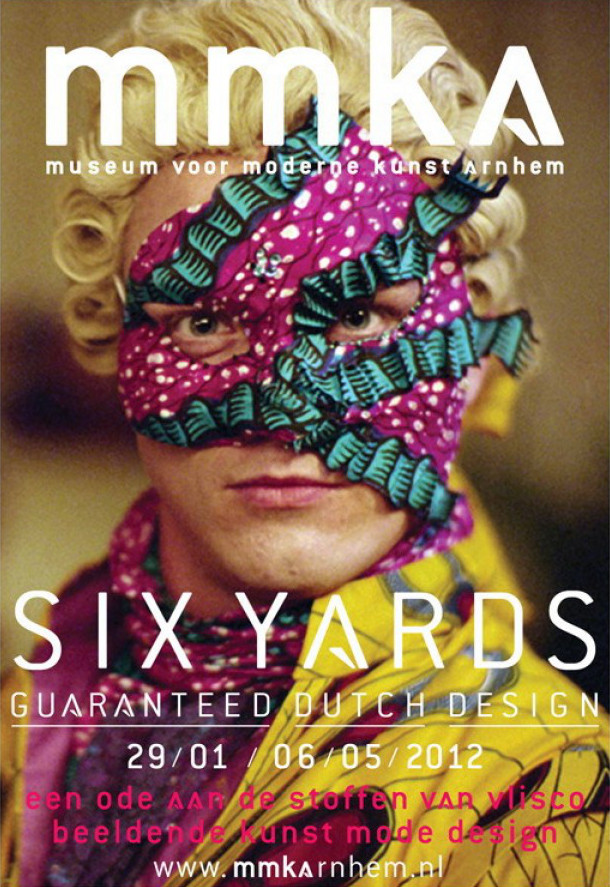
As early as 1846, the Vlisco company, based in Helmond, NL served the West African market with Dutch Wax textiles. In 2012, the Museum voor Moderne Kunst Arnhem presented an exhibition about how Vlisco’s Dutch textiles became a part of various West African cultures and found their way into international fashion, the visual arts, and photography. This exhibition was curated, designed and put togeter by collective Suze May Sho.
I was asked by Suze May Sho to create the lighting design. With almost no extra budget, I invested on daylight fluorescent tubes and some loose fluorescent fixtures. Otherwise I used the existing equipment of the museum.
I used good quality daylight fluorescents to illuminate areas where color rendition was the most important factor. Most of the artwork was illuminated with warmer light. The combination of colour temperatures and visibles sources of light created rhythm to the visually rich and busy exhibition.